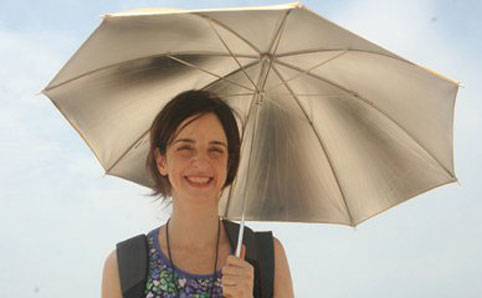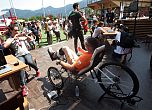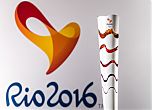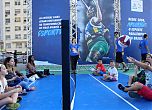
Photographer Daniela Dacorso spent years as a photojournalist on news assignments, during which time the ingenuity and unique style she found in some of the forgotten parts of Rio’s suburbia came to fascinate her. After a successful exhibition of photos of the Carioca Funk scene, Daniela turned her eye to the Evangelical churches, abandoned railway lines and streetside vendors of Zona Norte, and the results can currently be seen at Flamengo's Oi Futuro in the exhibition Expofoto [sub] urbanos. Time Out talks to her about Carioca life on both sides of the Tunel Rebouças.
So, Zona Sul or Zona Norte?
I live in Gávea, which used to be an industrial area but now it’s very bucolic. In my street, a lot of the houses used to be housing for people who worked in factories. I love Zona Sul, and it has the beach, but after I moved there I started to miss the mess. Everything is beautiful, but it’s a bit like a film set.
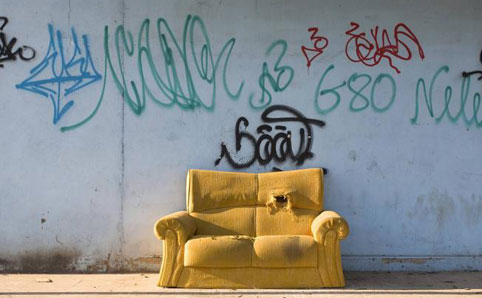
What inspired you to photograph suburbia?
What really attracted me was the inventiveness and creativity of people in finding solutions in areas which have been otherwise abandoned. They paint their own signs, build their own houses, and people there have their own unique style. They customise what resources they have to create new looks and new ways of making their environment attractive to live in.
Who is the man in your exhibition in the photograph with the blue shirt?
I was in Pilares covering the floods when I saw this man. He is a number runner for jogo do bicho (an illegal gambling game), and in the middle of all this chaos he was just carrying on his business, I had to photograph him. He was very proud to be in the picture, and told me that he is respected by everyone in the community, including the drug dealers.
Are you carioca born and bred?
I was born in Belo Horizonte, but I came to Rio when I was eight years old. I fell in love with it and I’ve been here ever since. São Paulo is great for new styles and trends, but you can’t beat the summer in Rio.
Where do you go to the beach?
Arpoador towards the end of the day. It’s where a lot of artist friends of mine hang out, and there are often parties at night.
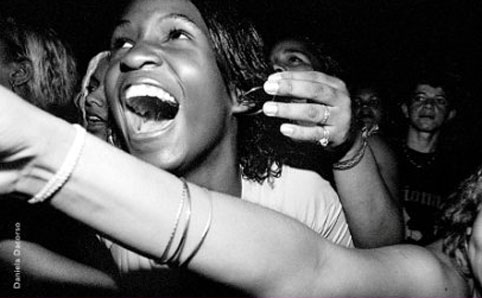
How did the funk photos come about?
I loved going out to bailes during the 1990s and I knew a lot of the artists like Mr Catra. I had the chance to photograph it from the inside. I was enthralled by it, the language of the body in funk, the way people use their bodies to exhibit power, and the hyper-sexualisation of it. I was at a baile once standing next to a teenage boy who was waving a gun which had been painted with the Flamengo colours. It can be a surreal scene at times. The music might have origins in Miami Bass, but now it is Brazilian electronic music through and through.
What would you do if you were Mayor for a day?
I would pay some attention to Baixada Fluminense, Nova Iguaça, and other areas further from the centre. The UPPs (police pacification units designed to rid favelas of armed drug gangs) have made a difference in Zona Sul, but a lot of the drug gangs have just moved further out, making these neglected areas even more dangerous.
What is your favourite restaurant in Rio?
I love Casa da Táta (Rua Professor Manuel Ferreira 89, Gávea. www.dacasadatata.com.br) in Gávea. There is always a plate of the day, it’s not too expensive and they have great Brazilian dishes like bacalhau (cod).
What insiders tip would you give to foreigners looking for something different to do?
Hire a car, and head towards Teresopolis. Before the turning for the Serra, there is a turning for the Parque Nacional da Serra dos Orgãos, an area of natural beauty that has the most beautiful waterfalls I’ve ever seen.
What is your favourite shop in Rio?
I love Saara because even if you don’t have very much money, you can buy something there which will be fun, even if it isn’t very useful. The fair at Praça XV is great too. There is a part of it we call Mendigo Mall (Tramp’s Mall), where homeless people sell things. You can find lots of curiosities there, really old and unusual things.

